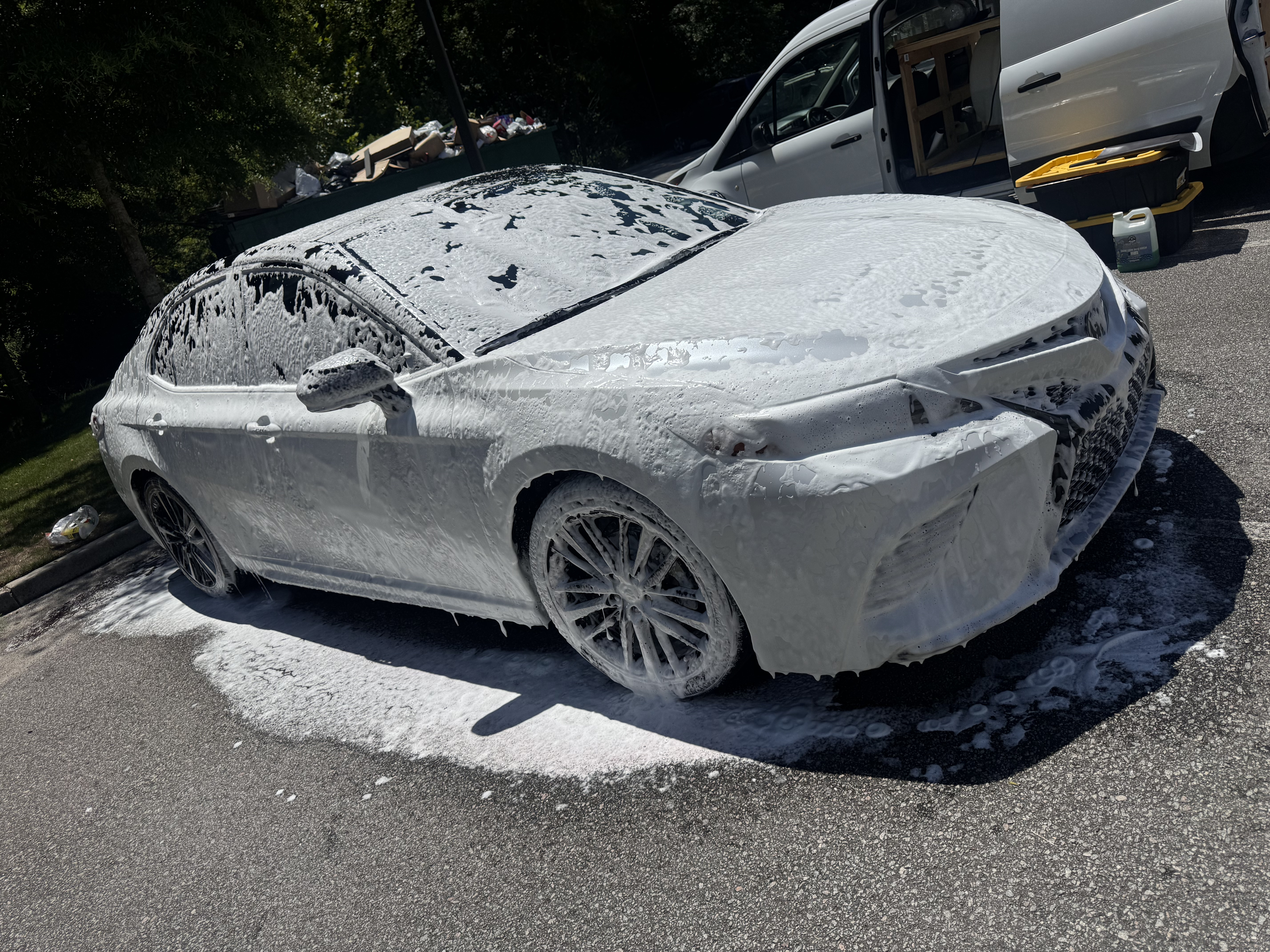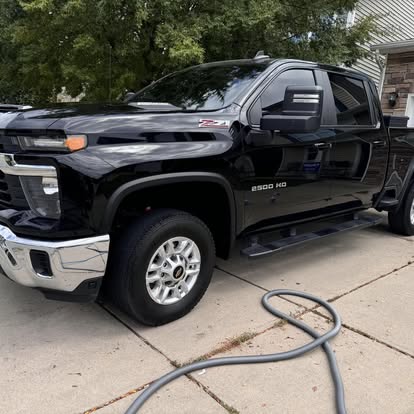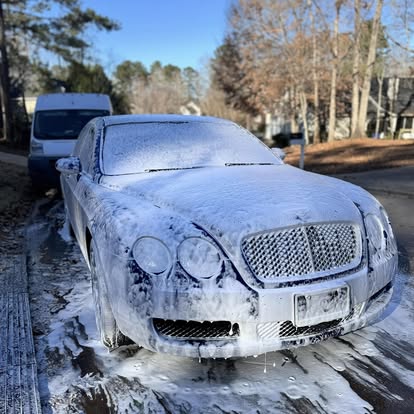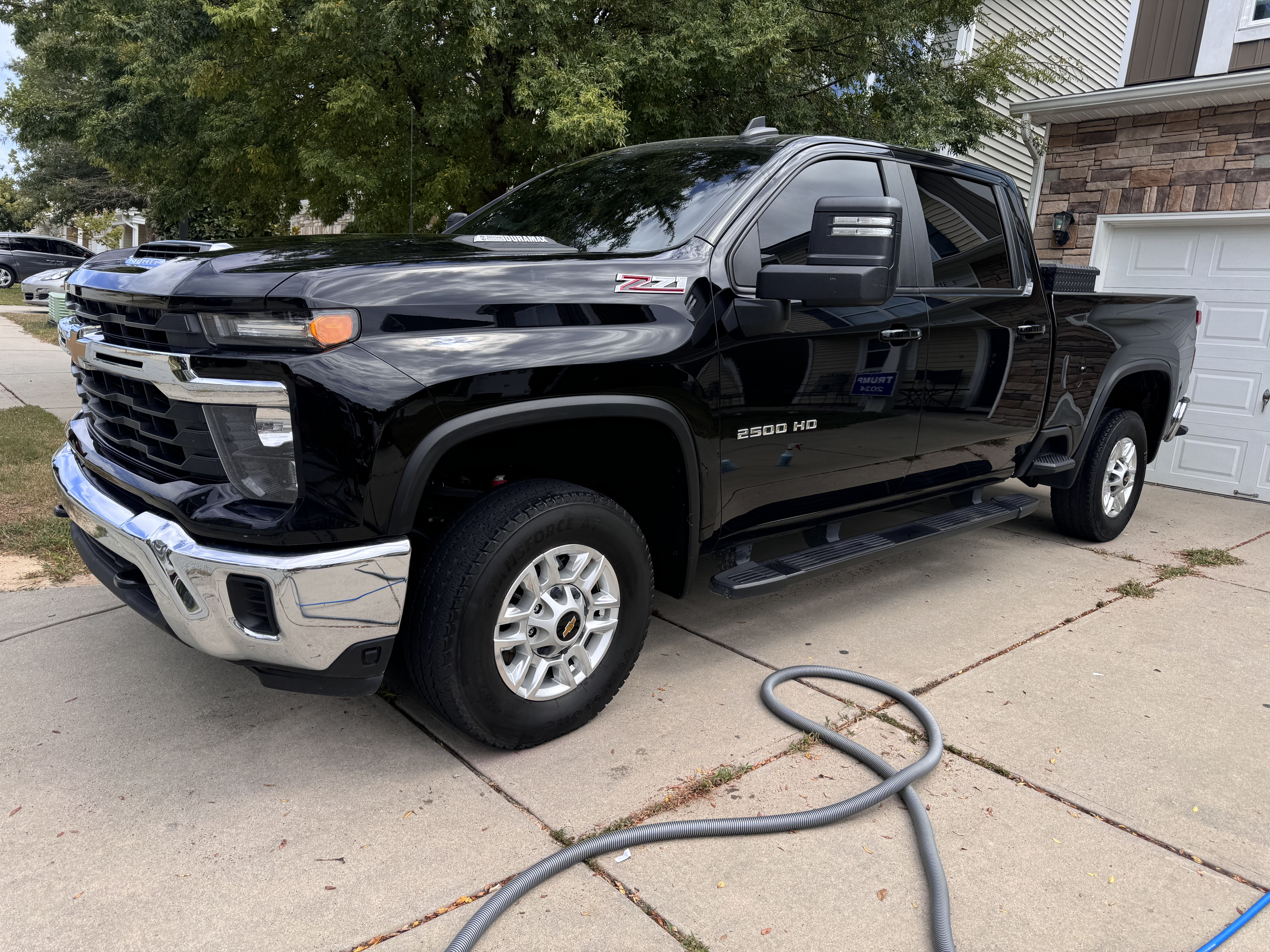South Carolina summers are brutal on vehicles. With temperatures regularly exceeding 95°F, heat indexes pushing 110°F, intense UV exposure, and dashboard temperatures reaching 170°F, Columbia's summer conditions accelerate wear on every vehicle component. After detailing thousands of vehicles through Midlands summers, I've learned exactly what preparation prevents damage and what shortcuts lead to costly repairs. This comprehensive guide prepares your vehicle to survive and thrive through South Carolina's challenging summer months.
Understanding South Carolina Summer Challenges
Extreme Heat and Temperature
Columbia regularly experiences:
- Air temperatures: 90-100°F (June-August)
- Heat index: 105-115°F with humidity
- Paint surface temperature: 140-160°F in direct sun
- Interior temperatures: 130-170°F in closed vehicles
- Dashboard surface temperature: 170-200°F
These extreme temperatures damage paint, crack dashboards and leather, degrade rubber seals, and accelerate fluid evaporation.
Intense UV Radiation
South Carolina's UV index reaches "very high" (8-10) or "extreme" (11+) levels throughout summer. UV radiation causes:
- Clear coat oxidation and fading
- Interior surface fading and cracking
- Rubber and plastic degradation
- Accelerated aging of all materials
High Humidity
Columbia's 70-80% average humidity creates perfect conditions for:
- Mold and mildew growth in interiors
- Accelerated rust development
- Musty odors in cabin
- Water spot etching on paint
Increased Bug Activity
Summer brings swarms of bugs whose acidic remains etch paint if not removed promptly. Love bugs, gnats, and other insects create significant contamination during June-September.
Exterior Summer Preparation
Step 1: Thorough Cleaning and Decontamination
Start summer with completely clean paint:
Complete wash: Remove all dirt, pollen, and winter grime using pH-neutral car soap and proper two-bucket method.
Clay bar treatment: Eliminate bonded contaminants—tree sap, industrial fallout, and spring pollen residue. Paint must be perfectly smooth for protection to bond properly.
Paint inspection: Check for damage from spring pollen season. Water spots and pollen etching should be addressed before summer heat bakes them in permanently.
Step 2: Paint Correction (If Needed)
Summer is ideal for [service-paint-correction]:
- Removes swirl marks and oxidation from previous summer
- Eliminates water spot etching from spring
- Creates perfect surface for maximum protection
- Restores gloss and clarity before sun exposure
Paint correction before summer protection provides best possible foundation.
Step 3: Maximum UV Protection
UV protection is critical for South Carolina summers:
Ceramic coating (best option): [service-ceramic-coating] provides superior UV defense:
- Prevents oxidation and color fading
- Creates heat-resistant barrier
- Lasts entire summer and beyond (2-5+ years)
- Makes cleaning easier in bug season
- Hydrophobic properties prevent water spot etching
Paint sealant (good option): Synthetic protection lasting 3-6 months:
- Better heat resistance than wax
- Strong UV protection
- More durable in extreme temperatures
- Requires reapplication mid-summer
Carnauba wax (budget option): Natural protection lasting 1-2 months in SC heat:
- Beautiful warm glow
- Adequate UV protection
- Requires monthly reapplication during summer
- Breaks down quickly in extreme heat
Step 4: Wheel and Tire Protection
Wheels face extreme heat from sun and brakes:
Thorough cleaning: Remove brake dust and road grime completely.
Wheel sealant: Protects against heat damage and makes future cleaning easier.
Tire conditioning: Quality tire dressing with UV protection prevents cracking and browning. Avoid petroleum-based dressings that dry out rubber in heat.
Step 5: Glass Treatment
Exterior glass: Apply hydrophobic glass treatment. Water beading improves visibility during summer afternoon thunderstorms.
Headlight protection: UV-resistant coating prevents yellowing and clouding accelerated by South Carolina sun.
Step 6: Rubber and Trim Protection
UV rays destroy rubber and plastic trim:
- Apply UV protectant to door seals, window trim, and bumper guards
- Treat black plastic trim to prevent fading to gray
- Condition weather stripping to maintain flexibility and seal
Interior Summer Preparation
Step 1: Deep Interior Cleaning
Summer heat intensifies any existing odors or contamination:
Complete vacuuming: Remove all debris from carpets, seats, trunk, and crevices. Hidden organic material creates terrible odors when heated.
Steam cleaning: Sanitize all surfaces, eliminating bacteria and mold spores before heat promotes growth. [service-interior-detailing] includes thorough steam cleaning.
Air vent cleaning: Dust and debris in vents blows into cabin when AC runs. Clean thoroughly before summer use.
Step 2: Dashboard and Surface Protection
Dashboard temperatures exceeding 170°F cause severe damage:
UV protectant application: Apply quality UV protectant to dashboard, console, door panels, and all interior plastics. This prevents:
- Cracking from heat and UV exposure
- Fading and color loss
- Brittleness and degradation
Avoid silicone-based products: These create greasy film that attracts dust and can cause sun glare. Use water-based protectants with UV inhibitors.
Step 3: Leather Care
Leather suffers tremendously in South Carolina summer:
Deep cleaning: Remove body oils, dirt, and previous product buildup.
Conditioning with UV protection: Premium leather conditioner with UV inhibitors:
- Restores moisture lost to heat and AC
- Prevents cracking and splitting
- Protects against color fading
- Maintains supple feel
Condition leather monthly during summer months for maximum protection.
Step 4: Window Tinting Considerations
Quality window tinting provides substantial benefits:
- Reduces interior temperature by 20-30°F
- Blocks 99% of UV rays
- Prevents dashboard and upholstery fading
- Improves AC efficiency
- Increases privacy and security
South Carolina law allows:
- Front side windows: 27% or more light transmission
- Rear side and back windows: Any darkness
- Windshield: AS-1 line or top 5 inches only
Step 5: Cabin Air Filter Replacement
Fresh cabin air filter before summer ensures:
- Better AC performance and airflow
- Cleaner air quality
- Reduced allergen exposure
- Prevention of musty odors
Replace cabin filter annually, ideally late spring before heavy AC use.
Step 6: Odor Prevention
Heat intensifies all odors. Prevent problems before they start:
Remove organic materials: Any food debris, spills, or organic material creates horrific odors when heated. Clean thoroughly.
AC system treatment: Run AC on recirculate mode with enzyme-based AC cleaner to eliminate mold and bacteria in evaporator.
Ventilation: When safely parked, crack windows slightly to reduce heat buildup and moisture accumulation.
Mechanical and Functional Preparation
Cooling System Check
Columbia summer heat stresses cooling systems:
- Check coolant level and condition
- Inspect hoses for cracks or soft spots
- Test radiator cap
- Verify cooling fans operate properly
- Flush and refill coolant if due (every 30k-50k miles)
Air Conditioning Service
AC is essential in South Carolina summer:
- Test system performance before peak heat
- Check refrigerant level
- Inspect belts for wear
- Clean condenser fins
- Service if performance is weak
Battery Inspection
Heat kills batteries faster than cold:
- Test battery capacity
- Clean terminals and connections
- Check electrolyte level (if accessible)
- Replace batteries 3+ years old before they fail in heat
Tire Pressure Monitoring
Heat increases tire pressure:
- Check pressure when tires are cold (morning)
- Maintain proper pressure (door jamb sticker specification)
- Inspect for wear, cracks, or damage
- Remember: tire pressure increases 1-2 PSI per 10°F temperature rise
Fluid Level Checks
Heat accelerates evaporation and degradation:
- Engine oil (change if due before summer)
- Brake fluid
- Power steering fluid
- Windshield washer fluid (fill completely—bugs!)
- Transmission fluid
Summer Parking Strategies
Garage Parking
Garage parking provides maximum protection:
- Reduces interior temperature by 30-40°F
- Eliminates direct UV exposure
- Protects from afternoon thunderstorms
- Prevents bird droppings and tree sap
Shaded Parking
When garage unavailable, seek shade:
- Tree shade reduces temperature significantly
- Building shade works well (watch for bird nesting areas)
- Covered parking structures ideal for daily parking
Car Covers
Quality breathable car cover for extended parking:
- Provides UV protection
- Keeps interior cooler
- Prevents bird dropping and sap damage
- Must be breathable to prevent moisture trapping
Windshield Sunshades
Reflective sunshade for dashboard protection:
- Reduces dashboard temperature by 40-50°F
- Prevents steering wheel from becoming too hot to touch
- Protects electronics and plastics
- Inexpensive investment with significant benefit
Summer Maintenance Schedule
Weekly Tasks
- Quick rinse to remove bug splatter and bird droppings
- Remove trash and debris from interior
- Check tire pressure
- Verify all fluids at proper levels
Bi-Weekly Tasks
- Complete wash with bug and tar remover
- Interior vacuum and wipe-down
- Glass cleaning (interior and exterior)
- Wheel and tire cleaning
Monthly Tasks
- Wax or sealant reapplication (if not ceramic coated)
- Leather conditioning
- Dashboard and trim protection reapplication
- Deep interior cleaning
- Check all weather stripping and seals
Mid-Summer Detail
Schedule professional [service-mobile-detailing] in July:
- Address any protection breakdown
- Remove stubborn bug residue and summer contamination
- Reapply or refresh protection for second half of summer
- Deep clean interior to prevent odor development
Emergency Summer Preparedness
Keep in Vehicle
- Extra water (for you and cooling system)
- Sunscreen and hat
- First aid kit
- Jumper cables or jump starter
- Tire pressure gauge
- Basic tools
- Coolant and oil (appropriate for your vehicle)
Things to NEVER Leave in Hot Car
- Children or pets (obviously!)
- Electronics (heat damage)
- Medications (potency loss)
- Bottled water (chemical leaching)
- Aerosol cans (explosion risk)
- Lighters (fire hazard)
- Sunglasses and glasses (warping)
Special Considerations for Columbia Vehicles
Lake Murray Trips
Frequent lake trips require extra care:
- Rinse vehicle after each lake visit (road dust mixed with humidity)
- Vacuum sand and dirt before it grinds into carpet
- Address wet towel odors promptly
- Check for water damage in trunk/cargo area
Coastal Excursions
Charleston or Myrtle Beach trips expose vehicle to salt:
- Thorough wash including undercarriage within 24 hours
- Pay special attention to wheel wells and suspension
- Salt accelerates rust—prompt removal essential
Cost of Summer Preparation
Basic Summer Prep Package
- Complete detail: $150-250
- Paint sealant: Included
- Interior protection: Included
- Headlight restoration (if needed): $75-150
- Total: $150-400
Premium Summer Protection
- Complete detail with paint correction: $600-1,000
- Ceramic coating: $600-2,000
- Premium interior protection: Included
- Window tinting: $200-500
- Total: $1,400-3,500
Premium protection is one-time investment providing years of benefits versus repeated seasonal expenses.
Return on Investment
Proper summer preparation prevents:
- Paint oxidation and fading: $500-2,000 to correct
- Cracked dashboard: $200-1,000 to replace
- Leather damage: $500-3,000 for reupholstery
- AC system failure: $500-2,000 for repair
- Premature tire failure: $400-1,200 for replacement
$200-500 invested in summer preparation prevents thousands in potential damage.
Surviving South Carolina Summer
South Carolina summers are among the most challenging conditions for vehicles anywhere in the United States. However, proper preparation protects your investment and keeps your vehicle looking great despite brutal heat, intense UV, and challenging humidity.
The key is starting summer with maximum protection—clean paint, quality UV protection like [service-ceramic-coating], conditioned interior surfaces, and maintained mechanical systems. Combined with smart parking strategies and regular maintenance throughout summer, your vehicle will not only survive but thrive through Columbia's challenging conditions.
Don't wait until damage occurs. Schedule pre-summer detailing and protection in May before peak heat arrives. Your vehicle—and your wallet—will thank you when September arrives and your car still looks and performs like new.



